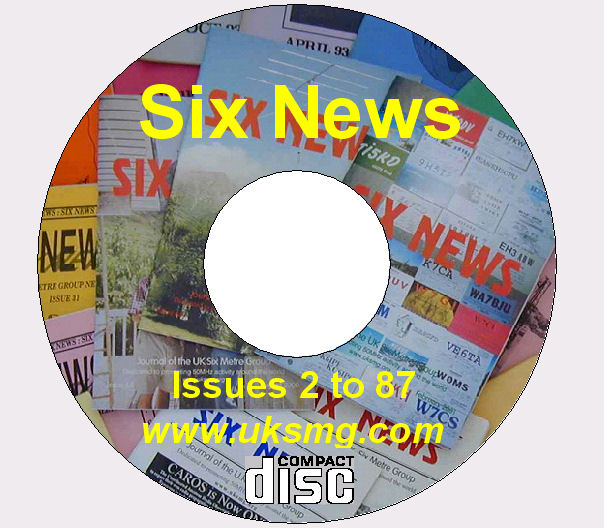

home > archive > interesting stuff > a new 6m Bandplan, is it necessary?

Thanks to all of our authors since 1982!
|
A New Six Metre Bandplan - Is it necessary? Pierre Pasteur, HB9QQ |
|
|
Activity on 50 MHz has greatly increased in the last ten years due to the liberation of the band in a great number of countries. Also many amateurs with restricted licences (VHF only) have been allowed to operate on six metres and this has further increased the general activity. The high solar values gave another incentive to activate the band and on days with great openings to W and JA the band was very overcrowded, especially in the CW portion. The current bandplan was created 20 to 30 years ago and the small occasional adaptations that have been made since then have not coped with changing needs. The next solar cycle (#24), which may bring good propagation in only five or six years from now, will motivate even more six metre operators, so there is no question whether we need a new bandplan. The answer is YES.
Proposed new arrangement of the six metre bandplan In the near future CW will no longer be obligatory to obtain an amateur licence to operate from UHF to HF. Nevertheless, CW remains one of the most efficient and important traffic modes, especially for DX operation. The newly developed modes like PSK31, WSJT, JT44 etc. might have specific advantages but they cannot reach a QSO rate (per minute) as high as CW. Furthermore a great number of WSJT QSOs were only possible by pre-arrangement via cluster or Internet. 1. CW portion 50.000 - 50.050 MHz Intercontinental segment 50.050 MHz CW calling frequency 50.050 - 50.100 MHz CW general traffic
2. SSB portion 50.100 - 50.150 MHz Intercontinental segment 50.150 MHz Intercontinental calling frequency 50.150 - 50.300 MHz SSB and CW general traffic 50.300 - 50.325 MHz SSB and CW meteor-scatter traffic General remark: HSCW meteor scatter might slowly disappear in the years to come, but SSB meteor scatter will always remain an interesting propagation mode.
3. Digital communication
The segmentation would be as follows: 50.325 -50.400 MHz Digital communication Subdivisions - if necessary - should be proposed by people with digital experience General remark: it can be assumed that there will be no massive increase in WSJT DX communication as long as there is no automatic TX/RX time coordination between the two partner computers.
4. Crossband traffic
5. New definition of the
beacon segment 50.400 -50.500 MHz Beacons Recommendation: for beacon rearrangements and new beacons care should be taken that the carrier in between the call sign, locator and other details should be identified as a beacon carrier by dots, dashes, pulses, shift-pulses, etc. so there is no confusion with commercial intruder carriers.
6. All mode segment
May 2002, HB9QQ Pierre is a respected DX operator and has made some important proposals. They deserve serious consideration, but what do you think? Whether you agree, disagree or have alternative ideas please let us know by writing to the editor at the address inside the front cover of Six News, via email to: editor@uksmg.org, or take part in our debate on the Bandplan issue in the UKSMG Forum.
|
CQ from UA2F/DK2ZF
Lebanon on 6m
Bermuda on 50mhz - June
1994
who are those NA stations?
6m is dead, so what?
the UK six metre
repeater network
of mice and men - /p
in EI
sic metres - the
tragic band?
F2 DX opening cycle 22,
11 Feb '89
european
beacon map
prototype
time-sharing multi-band beacon
The story of PA3HEN/MM
are you one of the
deserving?
an interview with
Peter Sprengel, PY5CC
some
statistics of activity by XE stations
the wide route
along the equator
a homebrew contest station
the Hong Kong 6m scene